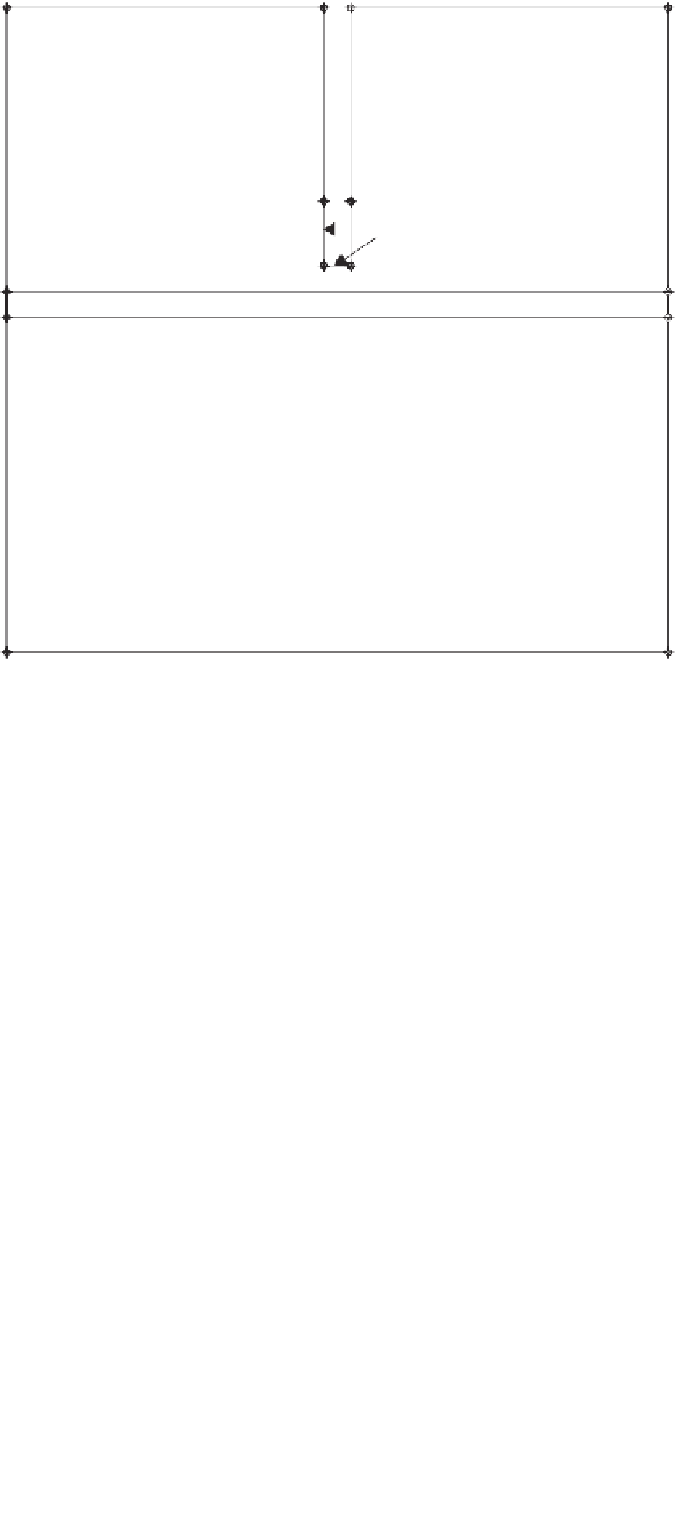Environmental Engineering Reference
In-Depth Information
24,50
50,50
0,50
26,50
Sand
u
a
= 121.0 kPa
50,28
k
a
= 2.18 x 10
-5
m/s
Silt layer
50,26
Sand
k
a
= 2.18 x 10
-4
m/s
50,0
Impervious boundary
0,0
Figure 9.37
Geometry of trench subjected to air pressure when less permeable layer exists
below bottom of trench.
the trench. The silt layer has a coefficient of air permeabil-
ity of 2
.
18
table was encountered at a depth of 3.37 m. The well depth
was 2.88m and the well screen height was 0.6 m. The well
radius was 0.115 m, the model radius was 20 m, and the
model depth was 3.37 m.
The absolute air pressure at the ground surface was
101.5 kPa (i.e., atmospheric pressure). The side and base
of the well screen had an applied air flux (or standard
condition velocity) of 0.1379 m/s. The remainder of the
well had zero air flux designated as the boundary condition.
The intrinsic permeability of the soil was 1
.
4
10
−
5
m/s and the sand has a coefficient of
air permeability of 2
.
18
×
10
−
4
m/s. The bottom portion of
the trench was again subjected to a positive air pressure of
20 kPa above atmospheric pressure.
The trench was again approximated as a two-dimensional
plane passing through the soil mass. The model is meant to
study the influence of a less pervious soil layer located below
the bottom of the trench. The contours of pore-air pressure
were calculated throughout the soil region. The dense clay
layer beneath the borehole is meant to inhibit the flow of air.
The pore-air pressure contours around the trench computed
using SVAir are shown in Fig. 9.38. The air flux results show
that the clay layer has significantly impeded the flow of air.
The above example problems have been analyzed with
the assumption that a positive pressure has been applied to
the zone near the bottom of the trench. It is also possible
to solve the same problem with a vacuum applied to the
bottom of the trench (i.e., vacuum extraction).
×
10
−
10
m
2
.
The vertical anisotropy ratio was 0.3142. An initial air
pressure of 101.5 kPa was applied to the soil through the
well screen. The soil was exposed to the atmosphere.
Baehr and Hult (1991) presented two analytical solutions
for steady-state axisymmetric air flow into a single well that
was partially screened in the unsaturated soil zone. Input
data were collected from a series of pneumatic tests. One
model assumed that there was a stratum with a relatively
low coefficient of air permeability that created a separation
of the soil from the atmosphere. In another scenario, it was
assumed that there was no separating layer between the soil
and the atmosphere. The second analytical model with no
separating layer was solved using a closed-form solution and
presented by Baehr and Hult (1991).
Figures 9.39-9.42 show the normalized air pressure
versus radial distance from the pumping well at various
×
9.10.6 Baehr and Hult (1991) Two-Dimensional
Steady-State Air Flow
Baehr and Hult (1991) analyzed an air flow problem involv-
ing a single material layer exposed to the atmosphere. A
well was drilled to a depth of 2.88m and a horizontal water












Search WWH ::

Custom Search